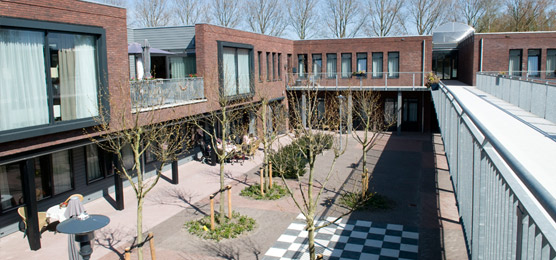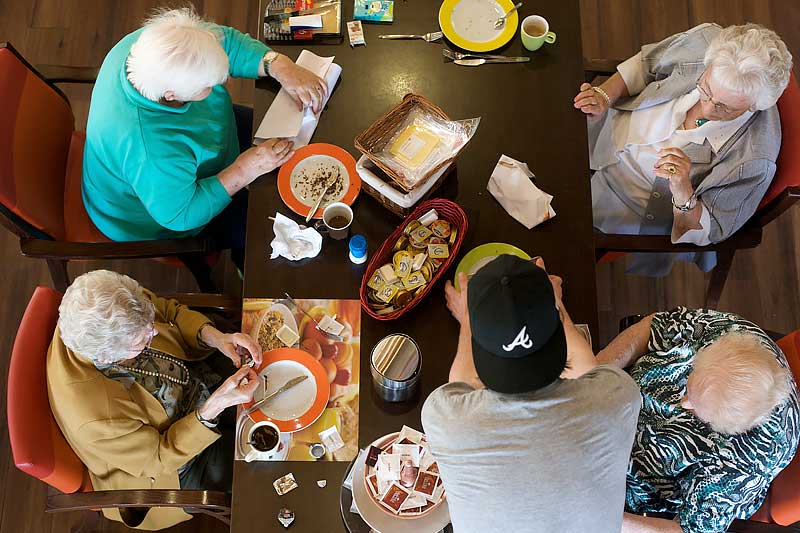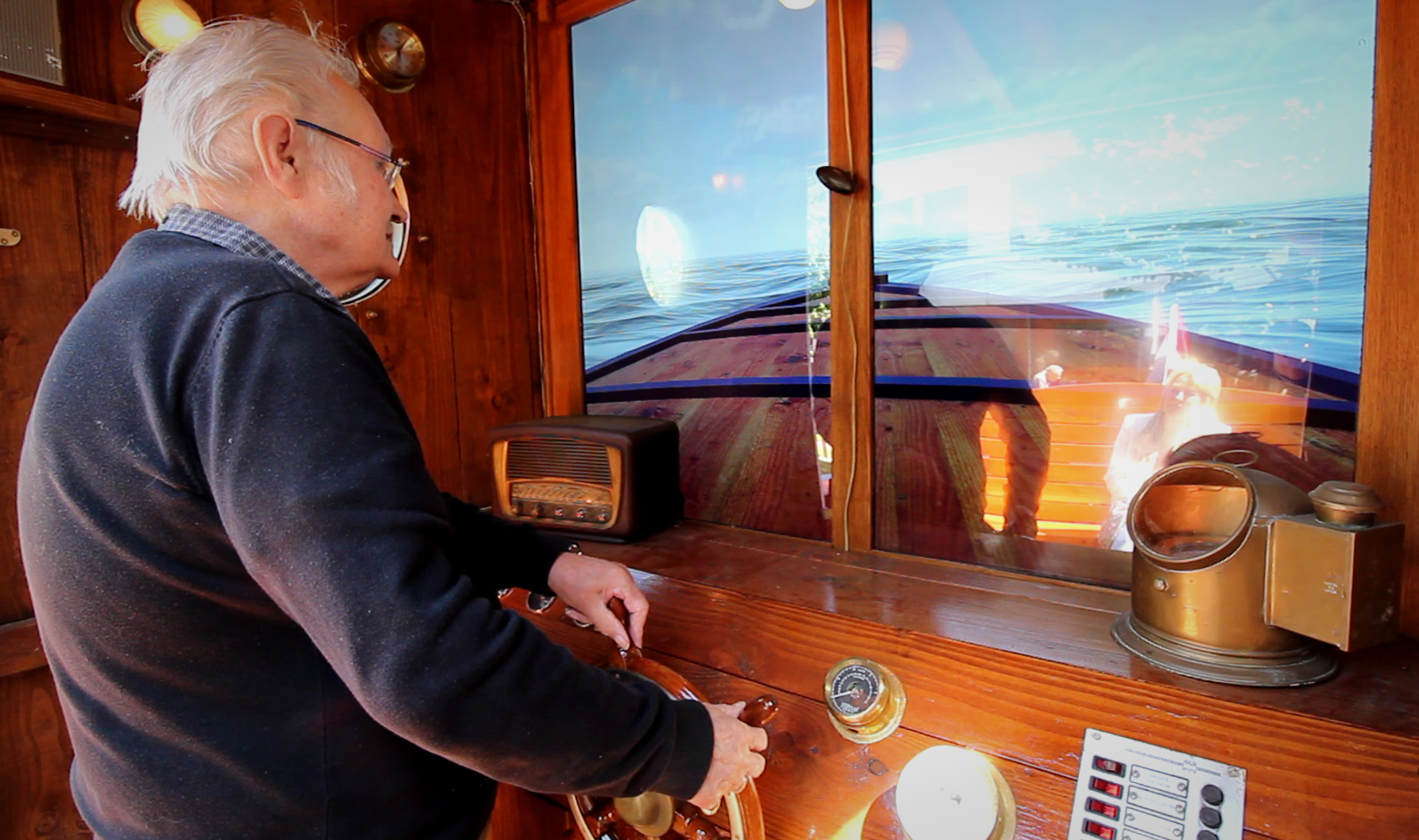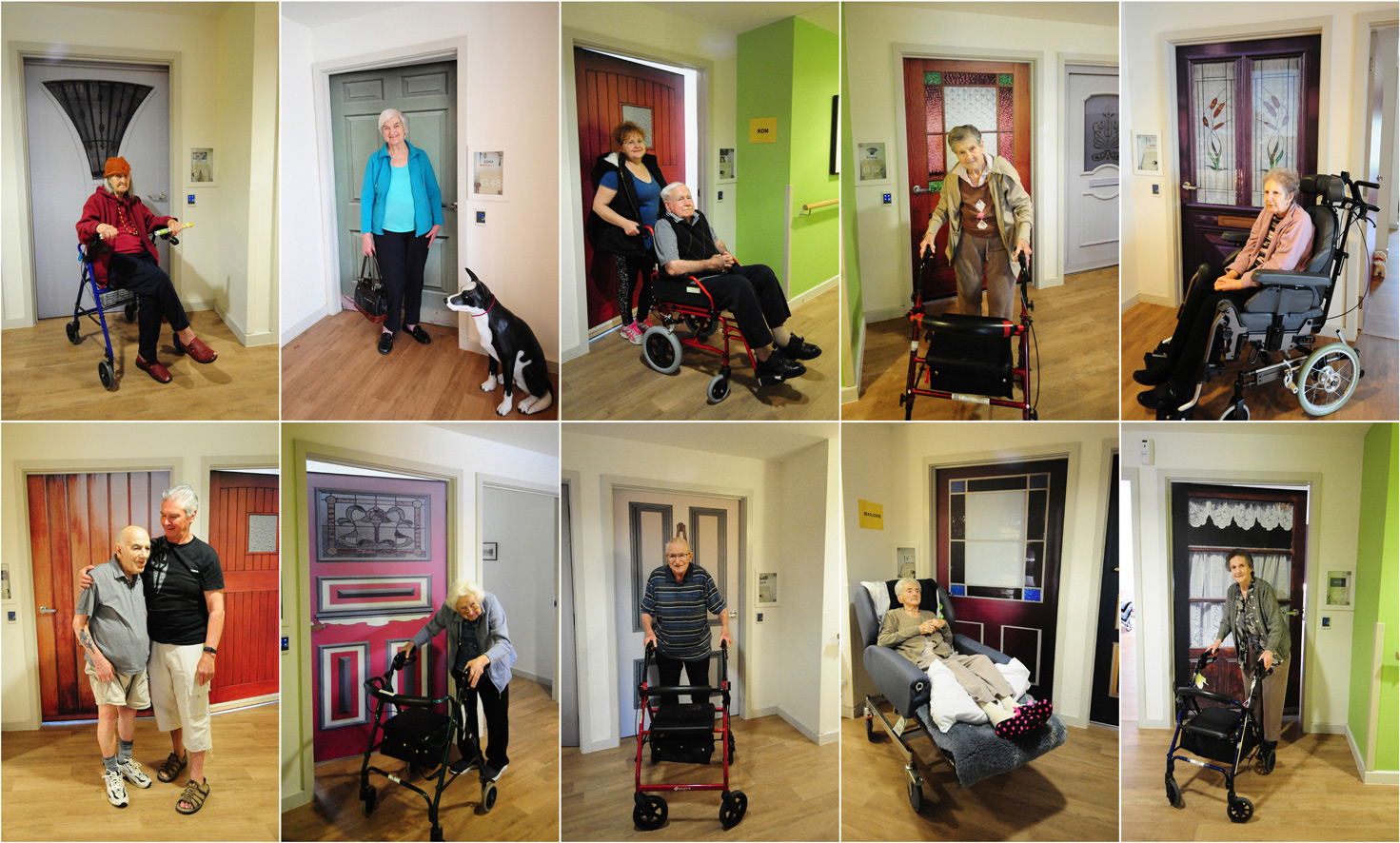
- Better Society -
- 6mins -
- 3,548 views
Check out 4 creative ways the Netherlands has found to care for the elderly
From living with 20-year-old students, to designing care homes like replicas of 1950s houses to help people with dementia feel comfortable, Dutch retirees rank among the happiest in the world.
The Dutch have been thinking outside the box when it comes to caring for the elderly
One nursing home in the Netherlands allows university students to live rent-free alongside the elderly residents, as part of a project aimed at warding off the negative effects of aging. In exchange for small, rent-free apartments, the Humanitas retirement home in Deventer, Netherlands, requires students to spend at least 30 hours per month acting as “good neighbours”.
Meanwhile, residents of Hogeweyk, a village located in Weesp, Netherlands, lead a normal life. They go to the grocery store, discuss the weather, and enjoy a weekly game of bingo. But there’s one thing that sets the 152 residents apart from the general public: Everyone has an advanced form of dementia. These are just two of the lateral thinking solutions the Netherlands have come up with to care for the elderly. Read on for more innovative Dutch thinking when it comes to caring for their older members of society.

1. Hogeweyk Dementia Village
The Hogeweyk (part of Hogewey care centre. A weyk or wijk being a group of houses, similar to a village) is a specially designed village with 23 houses for 152 dementia-suffering seniors.
The elderly all need nursing home facilities and live in houses differentiated by lifestyle. Hogeweyk offers 7 different lifestyles: Goois (upper class), homey, Christian, artisan, Indonesian and cultural.
The residents manage their own households together with a constant team of staff members. Washing, cooking and so on is done every day in all of the houses. Daily groceries are done in the Hogeweyk supermarket . Hogeweyk offers its dementia-suffering inhabitants maximum privacy and autonomy.
The village has streets, squares, gardens and a park where the residents can safely roam free. Just like any other village Hogeweyk offers a selection of facilities, like a restaurant, a bar and a theatre. These facilities can be used by Hogeweyk residents and residents of the surrounding neighbourhoods. Everybody is welcome to come in!
Hogewey’s view on care is founded in day to day life in society.
In normal society living means having your own space to live and managing your own household. People live together with other people sharing the same ideas and values in life. This makes the place where one lives a home.
Hogeweyk residents have already lived a life where they shaped their own life, where they made choices about their own household and standards. The fact that a resident cannot function “normally” in certain areas, being handicapped by dementia, does not mean that they no longer have a valid opinion on their day to day life and surroundings.
The residents opinion on life, housing, values and standards determine their “lifestyle”.
There are 7 lifestyles defined in Hogeweyk: urban, artisan, Indonesian, homey, Goois, cultural and Christian. Every Hogeweyk home houses six to eight people with the same lifestyle. This lifestyle can be seen in the decor and layout of the house, the interaction in the group and with the members of staff, day to day activity and the way these activities are carried out.
Every house manages its own household with a permanent staff. Another aspect of normal living is being able to move freely inside the house and outside. A normal house in a normal village in a safe environment gives the residents of Hogeweyk this freedom in safety.
Source: Hogeweyk.dementiavillage

2. Humanitas nursing home offers rent-free housing to students
One nursing home in the Netherlands allows university students to live rent-free alongside the elderly residents, as part of a project aimed at warding off the negative effects of aging.
In exchange for small, rent-free apartments, the Humanitas retirement home in Deventer, Netherlands, requires students to spend at least 30 hours per month acting as “good neighbours,” Humanitas head Gea Sijpkes said in an email to PBS NewsHour.
Officials at the nursing home say students do a variety of activities with the older residents, including watching sports, celebrating birthdays and, perhaps most importantly, offering company when seniors fall ill, which helps stave off feelings of disconnectedness.
“The students bring the outside world in, there is lots of warmth in the contact,” Sijpkes said.
Six students from area universities Saxion and Windesheim share the building with approximately 160 seniors. They are allowed to come and go as they please, as long as they follow one rule: Do not be a nuisance to the elderly.
Sijpkes joked that this is not difficult for the younger residents, especially since most of the older people living at the home are hard of hearing.
The program started two years ago after Sijpkes received an inquiry from a Onno Selbach, a student who complained about the noise and poor conditions of school housing. Sijpkes responded and they began to talk and design the exchange program.
Similar intergenerational programs exist in Lyons, France and Cleveland, Ohio, according to the International Association of Homes and Services for the Ageing. One program that began in Barcelona, Spain in the late 1990s has been replicated in more than 20 cities throughout the country.
Source: PBS

3. ‘Quo Vadis’ interactive boat installation for dementia patients
In the wheelhouse of ‘Quo Vadis’, residents can look out over a calm sea with seagulls soaring through the air. They can use the wheel to steer the boat and watch the physical compass match the new course. The wheelhouse is filled with the familiar sounds of the wooden boat creaking, the engine chugging along, the waves lapping against the boat and the seagulls calling.
A vintage radio provides multiple channels of well-known Dutch fisherman’s songs and sea shanties from residents’ youths to stir their memories.
Research has shown that engaging dementia patients with familiar sensory experiences can reconnect them to old memories and activate parts of the brain not affected by their disease. Music therapy for example, using familiar old songs, has shown to greatly increase quality of life for many patients, making them more active and engaged, and decreasing behavioural problems.
On the deck of the boat there is also a large comfy place to sit for less mobile residents or for when they just want to sit and enjoy the sun and listen to the music and sounds from the wheelhouse.
Source: Front404


